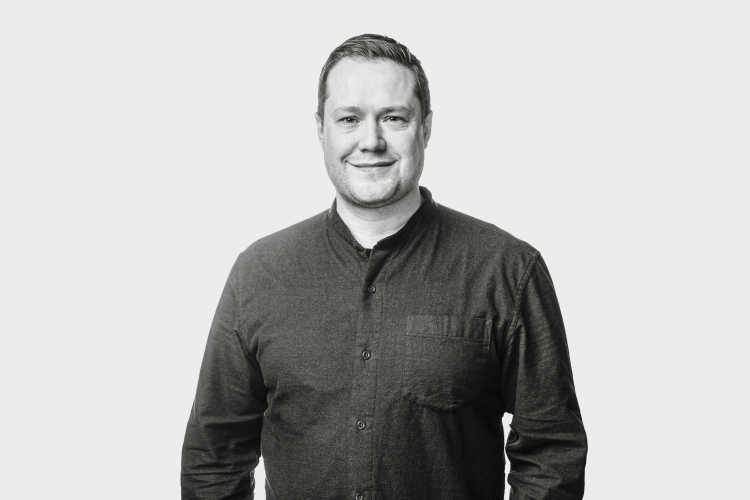When Mika Viskari decided to start Wunderdog, he didn’t know who the other founding members of the company would be. He wasn’t a software developer, but had a few ideas about running a business. How did this situation lead to an established coding and design company –with more than one hundred employees– six years later? A week before stepping down as CEO, we asked Mika to look back at Wunderdog’s history and give our readers tips on how to start a company.
Rumors say Wunderdog started in a bar.
Well, I spent some time looking for possible partners to join the adventure. I felt consulting companies could add more value to their clients by focusing more on transparency, better communication, and so on. On top of that, I was very interested in doing product development with a team I could interact with on a daily basis.
This is where LinkedIn breaks into the story.
Yes. I didn’t know anyone and I had to find the partners somewhere, so I used LinkedIn. I checked more than 200 people, meeting them one-on-one first. Of all of them, I chose 4 in the end. We decided to meet, all of us, at a bar, on a sort of blind date. We didn’t know each other, so the die had definitely been cast. However, the sparks flew. That night was crucial for Wunderdog’s birth. We chatted for a long time about what kind of company we wouldn’t want to work for, and that set the basis. All of us realized we had the same vision. We also agreed on what we didn’t want to be.
What kind of messaging did you use to approach people?
I found most of them on LinkedIn and I was quite straightforward, along the lines of: “I’m creating a new company in the field and I think together with your background and skills we could do something great”. Some people were hesitant, but if they didn’t reply, I called them. I invited some for lunch and made sure they didn’t think it was some sort of pyramid scheme.
Tell us how a newly founded company finds its first customers.
In Wunderdog’s case, the first customers came from our previous working lives and personal connections. We all knew the industry. We were developers or had been working closely with them. Finding projects wasn’t very difficult because there was already an interesting demand and we had the experience, a solid network and innovative ideas.
How does that reflect on the company's growth?
Our projects in the first operating months went so well that we eventually had to hire more developers. We formed a good ground team, working with people that were recommended to us and with whom we had symbiotic ways of working. As we grew, we hired people that also contributed to that beautiful atmosphere. Eventually, the harmony between us transcended our office. Other people approached us to work with us and the family grew organically. The key is to find good people to work in an environment they feel at ease with. We could say we built Wunderdog’s reputation from the start, based on caring deeply about solid groundwork.
How would you define Wunderdog now?
We are a digital life cycle service provider, focused on creating business value and solid outcomes. We code and design, but that’s only the base of what we do. We are also part of an ecosystem of expert companies making sure we provide the best return for our client’s digital investment. In other words, we handle the whole digital life cycle for our customers, proposing and providing tools that meet their needs, rather than only following what we are required to do. We guarantee results and customer success. We work with existing businesses and we create them as well.
How does this success translate into, let’s say, numbers?
Our revenue together with our ecosystem has been over 15M in 2020. Compared to our revenue when we first started, it shows our growth and the effort we put into our projects.
Speaking of projects, can you tell us how they work?
There’s nothing we cannot do, as long as it has been tested as future proof and a smart investment. This is why we enjoy creating new business. Innovation is usually at the core, which is always exciting. Our customers often have a roadmap in their minds, and if not, we create it together. Then we work hand in hand to make sure we deliver it within their time frames.
Can you tell us a bit more about what customers expect from Wunderdog?
We help them scale their own service production. Usually customers are capable of developing their digital cycles themselves, but need extra hands to drive their projects forward, be it through consulting or development. We make it happen. However, that’s not all. Some companies want to gain a strategic competitive advantage; some want to explore how their data and business legacy can create new revenue streams. Sometimes our customers are not experts in digital product development. When that happens, we become the missing piece, bridging that gap between business and digitalization, and we make sure it can be maintained autonomously after our work is done, making those companies more sustainable in the long run.
This post (part I) is an adaptation from Joonas Kykkänen’s interview with Mika Viskari in Joonas Kykkänen’s podcast, “From 0 to 100”. Joonas Kykkänen is a software developer from Wunderdog and author of the blog Flashover. To listen to the podcast, click here (In Finnish only).
